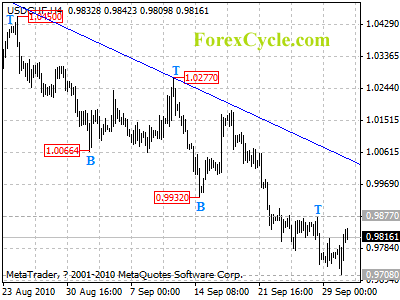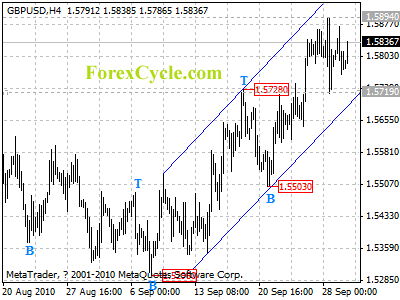By Sara Nunnally, Editor, Smart Investing Daily, TaiPanPublishingGroup.com
I’ve been to Las Vegas a few times in my life: Once on a cross-country road trip after college, once for a bachelorette party, and once to present at an investors’ conference.
Now, I’m back for Taipan Publishing Group’s annual Global Opportunities Summit, and we’re in an apt place to talk about investing.
Vegas is a world of its own. I’m not a big gambler, but I can understand the draw of potentially winning a mountain of cash. And it got me thinking about how some investment philosophies are no better than putting a “C-note” down at the roulette table.
In a way, you could consider many types of investing a gamble. There’s always the potential for most investments to lose value.
The trick is to know the odds, and limit the potential losses, and there are very good ways to do that, such as stop-losses, dollar-cost averaging, hedging and a number of other methods.
We’ve told you about some of them here at Smart Investing Daily.
But for some investors, chasing that next ten-bagger is too tempting to ignore.
A more aggressive investment portfolio tends to be for more risk-tolerant investors. Knowing your risk tolerance is a must when you’re dabbling in high-yield/high-risk assets. These investment portfolios can also require increased monitoring by you, so you need to know if you even have the time to take on some of the more aggressive investment portfolio tactics.
If you meet these criteria, here are some tips to help keep your head above water.
(Remember, investing doesn’t have to be complicated. Sign up for Smart Investing Daily and let me and my fellow editor Jared Levy simplify the stock market for you with our easy-to-understand investment articles.)
Learn How to Legally “Trick” a Mutual Fund Into Paying for Your Retirement
You could “siphon” thousands of dollars a month from the profits of the mutual fund industry.
Get all the details from New Growth Investor.
Beware of Fad Stocks
Fad stocks can give your investment portfolio a much-needed boost, but they can also turn on a dime.
Take CROCS (CROX:NASDAQ), for example. Back in 2006, this stock traded for $13.70… Then it went gangbusters, climbing as high as $68.98 in 2007. A fantastic gain of 403%!
But during the global financial crisis, CROCS fell to just over $1 a share. This massive drop wasn’t just because the economy was tanking. It was because CROCS had been bid up so high as investors jumped into the fad.
Aggressive investors may look at that +400% gain, and say, “Hey, it’s worth the risk.” But you have to know when to get out.
Watch for short-sellers entering into the market. When a stock gets too hot, the short-sellers’ mouths start watering, and once the stock turns, this could send fad stocks lower hard and fast.
Use Stop-Losses for Global Markets
With the globalization of the financial markets, trading has become a 24/7 business. This is a good thing, and investors all over the world have access to both major and growing markets.
The thing is, you need to be up on what’s happening in the farthest reaches of the world, and that might require you to actually “be up” into the wee hours of the morning keeping trades under your watchful eye… And that’s not always practical.
That’s why stop-losses are so important. Not only do they allow you to get some sleep if you’re watching the currency markets and the Japanese yen, they help you limit the amount of money you put at risk.
This method is good for both day traders and “buy and hold” investors. It’s a great tactical maneuver, and if your understanding of whatever financial asset you’re investing in is very tuned in, you can place these losses in very key points to save gains and protect your investment from turning against you.
URGENT: China’s 98% Monopoly on This Resource Is Causing Panic at the Pentagon!
China has seized a near total monopoly on supplies of a natural resource treasure that is 100% mission critical to just about every piece of military technology – from satellites to smart bombs.
Learn what these materials are… why they are so critical… and how a pending Department of Defense report could make you gains of 20-to-1 in this URGENT FREE REPORT.
Stash Some Cash
Never underestimate the value of liquid net worth.
Some portfolio managers suggest that those investors close to retirement or already retired hold two to five years’ worth of living expenses as cash.
Aggressive investors may opt to hold much less. But they should at least hold some. By holding cash, you have a lot more flexibility when timing your investments. You can react to new investment ideas very quickly, which can allow you to take advantage of more gains than someone who has to worry about liquidating some assets before they invest in something new.
Holding cash is also important for when your investments turn against you, especially since many aggressive investors don’t live off their portfolio’s returns.
Of course, the ratio of cash in your investment portfolio is a completely individual choice, but maintaining some balance is always a smart idea.
At our annual summit, all of Taipan Publishing Group’s editors are presenting different ideas of what you should do with your money. Some ideas are for buy-and-hold investors, and some are for those aggressive traders.
But regardless of what type of investment portfolio you have, today’s financial markets require you to be alert and nimble.
Cash, stop-losses and timing are key components for every investment strategy.
Don’t forget to follow us on Facebook and Twitter for the latest in financial market news, investment commentary and exclusive special promotions.
About the Author
Sara is Co-Editor of Smart Investing Daily. As Senior Research Director and global correspondent, Sara Nunnally’s diverse resume includes studies in art history, computer science and financial research. She has appeared on news media such as Forbes on Fox, Fox News Live, and CNBC’s Squawk Box, as well as numerous radio shows around the country.
As Senior Research Director, global correspondent and co-editor of Smart Investing Daily, Sara has traveled all over the world in search of the best investment opportunities to recommend to her readers, be they in developed economies like France and Italy, in emerging markets like the Czech Republic and Poland, or in frontier terrain like Vietnam and Morocco. Her unique “holistic” approach of boots-on-the-ground research has given her an edge in today’s financial marketplace as she searches for the next investment opportunities in hot sectors like alternative energy, currency markets and commodities.




